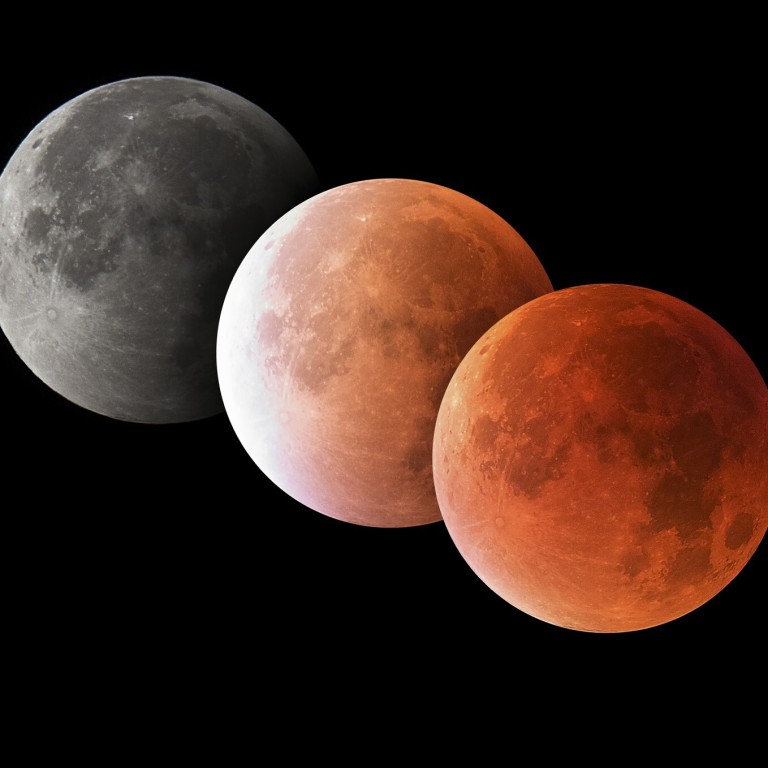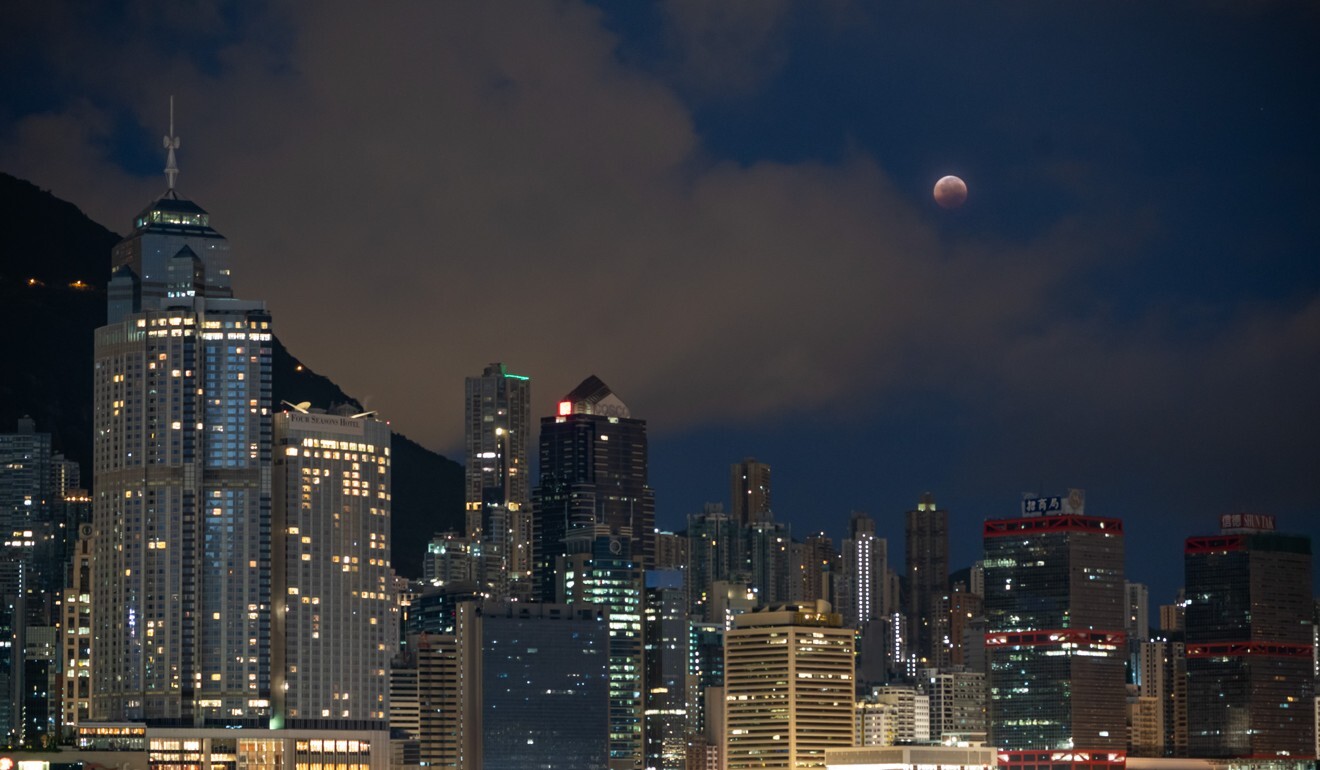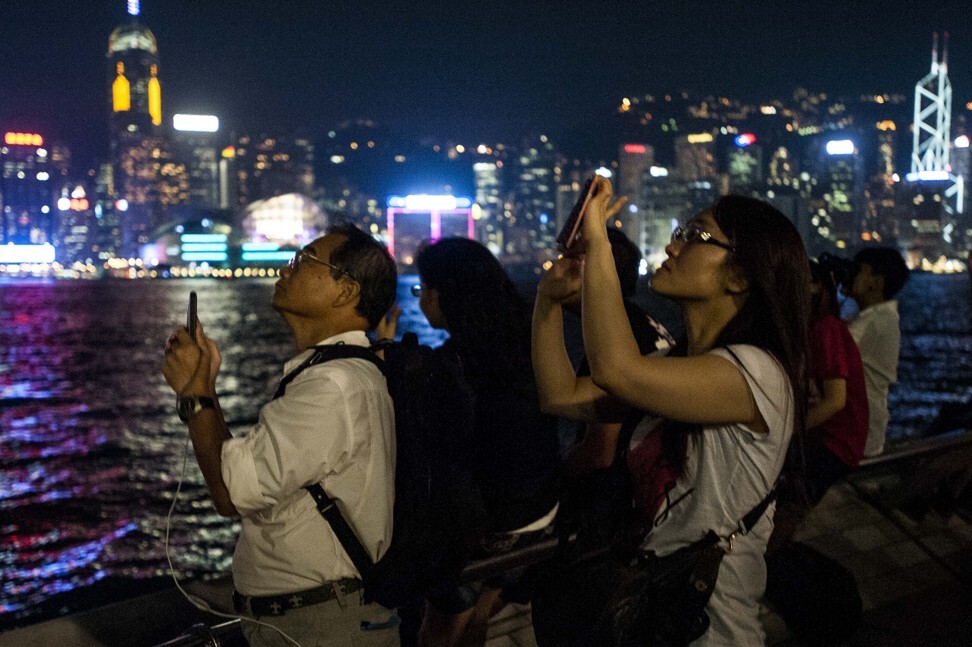
Explainer | Pacific Rim super blood moon lunar eclipse this week: when it is, what to expect, and which places will have the best view
- A super moon happens when a full moon occurs at the point the moon’s orbit brings it closest to Earth. A blood moon appears when it moves through Earth’s shadow
- A combination of these events occurs on Wednesday, with a total lunar eclipse, then a partial and a penumbral eclipse; the moon appears red, then fades to grey
Just after sunset on May 26 a “super blood moon” will hang in the eastern sky over Hong Kong, as a super moon and a total lunar eclipse combine in a rare celestial alignment.
The first total lunar eclipse for Asia in almost three years, it’s set to be a brief but dramatic sight. It will be visible for just 15 minutes from around the Pacific Rim on the entire night side of Earth, and onlookers will be hoping for clear skies as the moon turns a reddish-orange.
What causes a super blood moon?
The moon orbits Earth in a slightly elliptical orbit every 27 days, so there’s a point every month when it’s farthest away and another when it’s closest. This movement towards and away causes tides in the oceans. When a full moon occurs while it is at its closest to Earth, that’s called a super moon.

It’s happened a few times this year already, but this “flower moon” will be the closest of the year. It will get to within 357,311km of Earth just nine hours before the “blood moon”, or total lunar eclipse. The result is that this full moon will look about 8 per cent larger than an average full moon. Usually that means an extra-bright full moon, but not this month. However, do expect king tides in Victoria Harbour.
What causes a total lunar eclipse?
A blood moon is the result of a full moon moving through Earth’s shadow. That can happen when the Earth is between the sun and the moon, but it’s rare because the moon’s orbital path around Earth is off-kilter, so it usually moves beneath or over Earth’s shadow. If that were not the case, there would be a total lunar eclipse every month. The last one in Hong Kong was a “half-blood” partial lunar eclipse on July 17, 2019.
Why does a super blood moon turn red?
The only light you’ll see on the moon as it rises in Hong Kong will have first been filtered by Earth’s atmosphere. The sun looks an orangey-red during sunset and sunrise because red light has the longest wavelength of all. It therefore travels through the Earth’s atmosphere more easily, striking fewer molecules in the air as it passes through (blue has the shortest wavelength, so hits a lot of obstacles and scatters, which is why the sky is blue).

The same happens during a total lunar eclipse. Since the Earth is between the sun and the moon, the only light that can get to the moon has to first travel through Earth’s atmosphere.
What time can the super blood moon be seen?
For Hong Kong, the action begins with the rising of a full super moon that, within minutes, will be totally eclipsed. Get yourself somewhere high up so you can see the moon rise. Here’s the celestial schedule according to timeanddate.com:
18.56 HKT – Partially eclipsed moon rises in the east
19.11 – Total eclipse begins (just above the eastern horizon)
19.25 – Total eclipse ends, partial eclipse begins (just above the eastern horizon)
20.52 – Partial eclipse ends, penumbral eclipse begins (21 degrees up in the southeast)
21.49 – Penumbral eclipse ends (31 degrees up in the southeast)

What will the super blood moon look like?
There are a few different phases to this eclipse. The full moon will be totally eclipsed – and a reddish colour – for 15 minutes before it moves out of Earth’s shadow and the left-hand side of the moon begins to brighten. Over the next 92 minutes the moon will become less red. Once it’s completely grey again it’ll be in Earth’s penumbra – it’s outer shadow – and will look like a dulled full moon.
Given clear skies, it should be an odd sight. Since totality occurs just as the moon is rising, expect to see a reddish full moon that is going to look larger than average. The rising full moon will appear far less bright than usual.
Then what?
When the 15 minutes of totality is over, if the sky is still clear, don’t make the mistake of looking away, because Hong Kong’s best views may be about to come. After the blood moon phase, the moon will drift out of Earth’s central shadow, but this partial lunar eclipse (a “half blood moon”) is just as strange a sight as totality.
With the full moon higher in the sky you’ll be able to see a slightly curved line across it. That’s the edge of Earth’s shadow in space being projected onto the moon’s surface. It’s one of nature’s weirdest sights.
Who else will see the super blood moon?
The Pacific Rim – including East and Southeast Asia, Australia, New Zealand, Pacific Ocean island nations and the west coast of the United States – will get some kind of view of the total lunar eclipse. Those in eastern Australia, New Zealand and Hawaii arguably get the best view of the blood moon high in the sky.
Expect to see the most photos from Hawaii and California, which have the best chance of clear skies. Totality occurs at 05.11-05.25 Universal Time – here’s when to see totality in local time in the Asia-Pacific regions:
Manila, Philippines: 7.11-7.25pm
Singapore: 7.11-7.25pm
Sydney, Australia: 9.11-9.25pm
Auckland, New Zealand: 11.11-11.25pm
Honolulu, Hawaii, USA: 1.11-1.25am
Los Angeles, USA: 4.11-4.25am
When will the next blood moon occur?
A partial lunar eclipse will be visible from Hong Kong on November 19, but the next blood moon total lunar eclipse won’t occur until November 8, 2022. That one will have a much longer totality, lasting 85 minutes.

